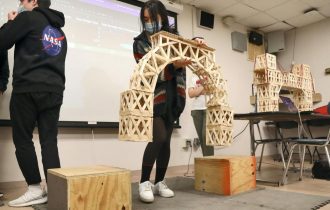Empowering Underrepresented Students in STEM Fields

Introduction
In today’s rapidly advancing world, the fields of science, technology, engineering, and mathematics (STEM) play a critical role in driving innovation and shaping the future. However, despite the increasing demand for STEM professionals, underrepresented students, such as women, minorities, and individuals from low-income backgrounds, continue to face significant barriers when pursuing careers in these fields. It is imperative that we take proactive measures to empower and support these students, as their unique perspectives and talents are essential for building a diverse and inclusive STEM community. This article explores strategies and initiatives aimed at empowering underrepresented students in STEM fields, highlighting the role of technology and real-world examples.
I. Breaking Stereotypes and Fostering Inclusion
1.1 Challenging Stereotypes: Redefining What it Means to be a Scientist
To empower underrepresented students in STEM, it is crucial to challenge stereotypes and redefine the image of a scientist. Many young students have preconceived notions that STEM fields are predominantly male-dominated or that scientists are only white individuals in lab coats. Breaking down these stereotypes requires showcasing diverse role models who have made significant contributions to STEM. As the renowned physicist Albert Einstein once said, “Everybody is a genius. But if you judge a fish by its ability to climb a tree, it will live its whole life believing that it is stupid.” By highlighting the achievements of women scientists like Marie Curie, computer scientists like Grace Hopper, and mathematicians like Katherine Johnson, we can inspire and motivate underrepresented students to pursue their passions in STEM.
1.2 Promoting Inclusive Learning Environments: Cultivating Diversity
Creating inclusive learning environments is essential for empowering underrepresented students in STEM. Educational institutions and organizations should actively promote diversity and provide safe spaces where all students feel welcome and valued. Initiatives such as establishing STEM clubs or societies that focus on underrepresented groups can help foster a sense of belonging. Additionally, integrating culturally relevant and inclusive curriculum content can make STEM subjects more relatable and engaging for students from diverse backgrounds. As the former first lady Michelle Obama emphasized, “We need to fix the leaky pipeline that robs so many girls and women of their chance to contribute to progress.” By creating an inclusive and supportive ecosystem, we can encourage more underrepresented students to pursue STEM fields.
II. Access to Resources and Mentorship
2.1 Bridging the Digital Divide: Technology as an Equalizer
Access to technology and digital resources plays a crucial role in empowering underrepresented students in STEM. By addressing the digital divide, we can ensure that students from all backgrounds have an equal opportunity to engage in STEM education. Initiatives like providing laptops or tablets to underserved students, establishing community technology centers, or offering subsidized internet access can bridge this gap. Furthermore, online platforms and educational websites can offer free or affordable STEM courses, tutorials, and resources, enabling students to learn at their own pace and explore various STEM disciplines. As Melinda Gates, co-founder of the Bill & Melinda Gates Foundation, stated, “Technology is just a tool. In terms of getting the kids working together and motivating them, the teacher is the most important.”
2.2 Mentorship Programs: Guiding and Inspiring Future STEM Leaders
Mentorship programs play a vital role in empowering underrepresented students in STEM. By connecting students with mentors from similar backgrounds who have successfully pursued STEM careers, we can provide guidance, support, and inspiration. Mentorship programs can be implemented in educational institutions, community organizations, or through online platforms. Mentors can help students navigate the challenges of pursuing STEM fields, provide career advice, and offer opportunities for networking and internships. As the renowned engineer and inventor, George Washington Carver once said, “Education is the key to unlock the golden door of freedom.” Mentorship can unlock the door to success for underrepresented students and empower them to thrive in STEM fields.
III. Encouraging Hands-On Learning and Collaboration
3.1 Project-Based Learning: Applying Knowledge to Real-World Challenges
Hands-on learning experiences and project-based assignments are powerful tools for empowering underrepresented students in STEM. These approaches provide students with opportunities to apply theoretical knowledge to real-world challenges, fostering creativity, critical thinking, and problem-solving skills. By incorporating project-based learning into the curriculum, educators can engage students in STEM subjects and promote teamwork and collaboration. For example, programs like the “Girls Who Code” initiative encourage young girls to develop coding skills by working on projects that address social issues, inspiring them to see the practical applications of their STEM knowledge.
3.2 Partnerships with Industry and Research Institutions: Exposing Students to STEM Professions
Collaborating with industry and research institutions can expose underrepresented students to the vast array of career opportunities in STEM fields. Partnerships can include initiatives such as career fairs, company visits, guest lectures, and internships. By providing students with firsthand experiences of working professionals and exposing them to diverse STEM career paths, we can inspire them to envision themselves as future scientists, engineers, or mathematicians. As the inventor and entrepreneur Elon Musk once stated, “The first step is to establish that something is possible; then probability will occur.” These partnerships help students realize that a career in STEM is not only possible but also achievable.
Conclusion
Empowering underrepresented students in STEM fields is not only a matter of equity and social justice but also crucial for driving innovation and solving complex global challenges. By challenging stereotypes, fostering inclusive learning environments, providing access to resources and mentorship, and encouraging hands-on learning and collaboration, we can create a more diverse and inclusive STEM community. As we strive for progress, let us remember the words of the American civil rights activist and scholar, Angela Davis: “I am no longer accepting the things I cannot change. I am changing the things I cannot accept.” Let us work together to empower underrepresented students and build a brighter future through STEM.

